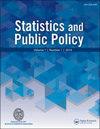An Alternative to the Carnegie Classifications: Identifying Similar Doctoral Institutions With Structural Equation Models and Clustering
IF 1.5
Q2 SOCIAL SCIENCES, MATHEMATICAL METHODS
引用次数: 1
Abstract
Abstract The Carnegie Classification of Institutions of Higher Education is a commonly used framework for institutional classification that classifies doctoral-granting schools into three groups based on research productivity. Despite its wide use, the Carnegie methodology involves several shortcomings, including a lack of thorough documentation, subjectively placed thresholds between institutions, and a methodology that is not completely reproducible. We describe the methodology of the 2015 and 2018 updates to the classification and propose an alternative method of classification using the same data that relies on structural equation modeling (SEM) of latent factors rather than principal component-based indices of productivity. In contrast to the Carnegie methodology, we use SEM to obtain a single factor score for each school based on latent metrics of research productivity. Classifications are then made using a univariate model-based clustering algorithm as opposed to subjective thresholding, as is done in the Carnegie methodology. Finally, we present a Shiny web application that demonstrates sensitivity of both the Carnegie Classification and SEM-based classification of a selected university and generates a table of peer institutions in line with the stated goals of the Carnegie Classification.卡内基分类的另一种选择:用结构方程模型和聚类识别相似的博士机构
卡内基高等教育机构分类是一种常用的机构分类框架,它根据研究效率将博士学位授予学校分为三类。尽管卡内基方法被广泛使用,但它有几个缺点,包括缺乏彻底的文件,主观地在机构之间设置阈值,以及一种不完全可复制的方法。我们描述了2015年和2018年更新分类的方法,并提出了使用相同数据的另一种分类方法,该方法依赖于潜在因素的结构方程模型(SEM),而不是基于主成分的生产率指数。与卡内基方法相反,我们使用SEM根据研究生产力的潜在指标获得每所学校的单因素得分。然后使用基于单变量模型的聚类算法进行分类,而不是像卡内基方法那样使用主观阈值。最后,我们展示了一个Shiny的web应用程序,该应用程序展示了对选定大学的卡内基分类和基于sem的分类的敏感性,并生成了一个符合卡内基分类既定目标的同行机构表。
本文章由计算机程序翻译,如有差异,请以英文原文为准。
求助全文
约1分钟内获得全文
求助全文
来源期刊

Statistics and Public Policy
SOCIAL SCIENCES, MATHEMATICAL METHODS-
CiteScore
3.20
自引率
6.20%
发文量
13
审稿时长
32 weeks
 求助内容:
求助内容: 应助结果提醒方式:
应助结果提醒方式:


